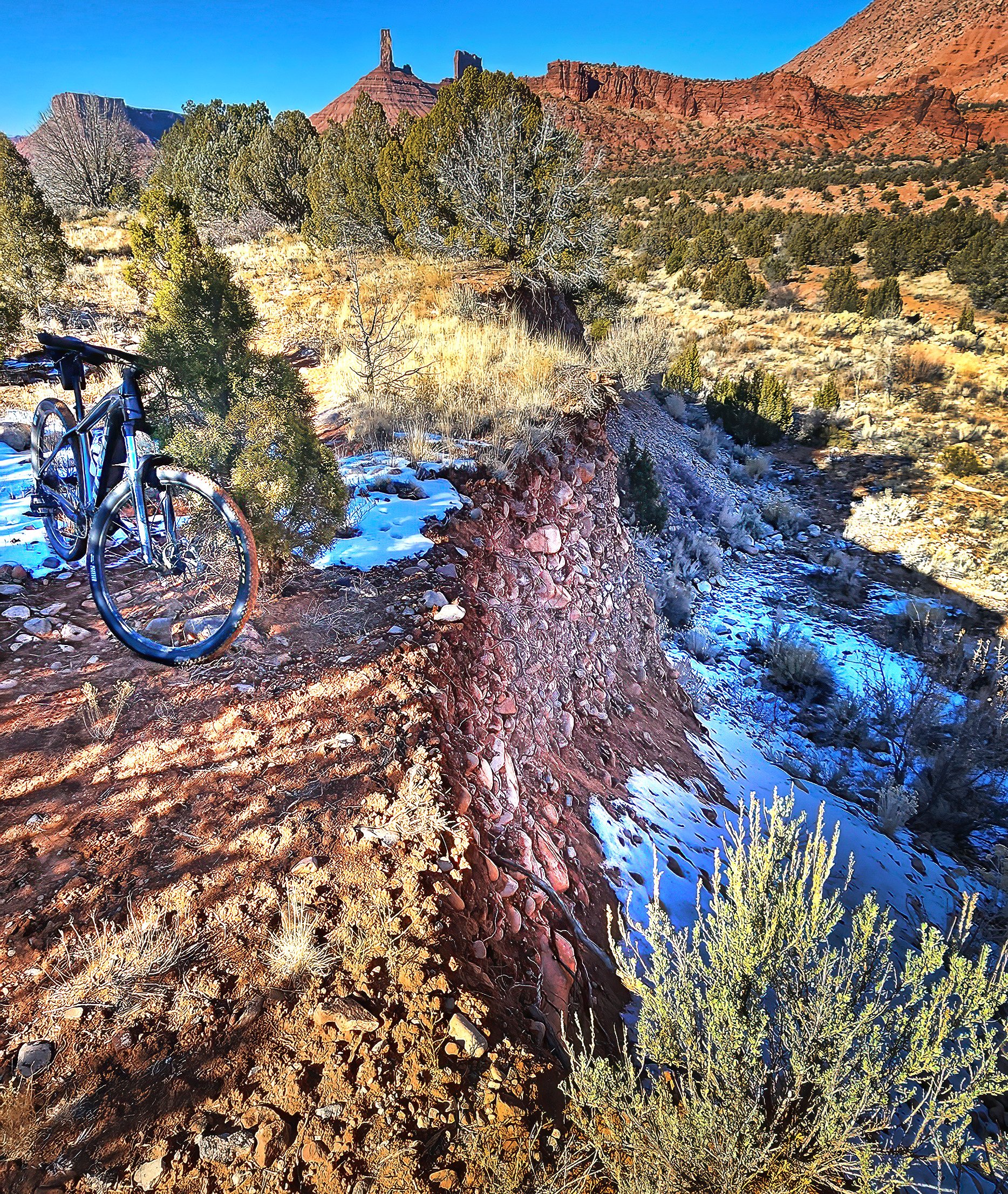resembling a cinder cone, Round Mountain is most certainly NOT volcanic in origin. It does indeed consist of igneous rock, but in an intrusive body that cooled and crystallized while still under the cover of sedimentary strata, now being exposed by the subsidence of the Castle Valley salt-cored anticline and through erosion.
Hand specimen of the trachyte porphyry found in Round Mountain. Note the large, white crystals of sanidine feldspar, evidence of its igneous origin.
Oh, yeah, it was a very nice afternoon for a ride.






























